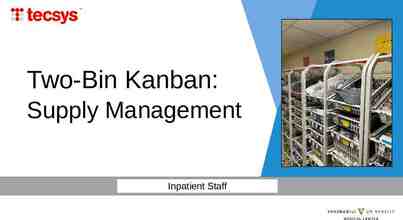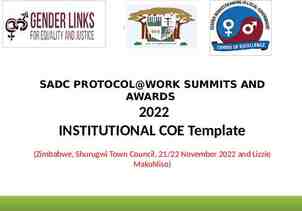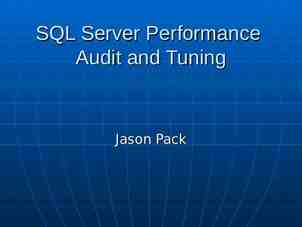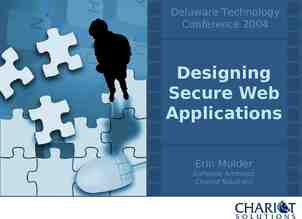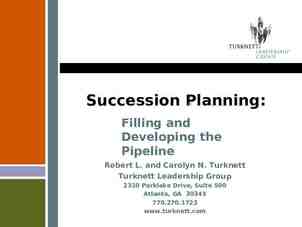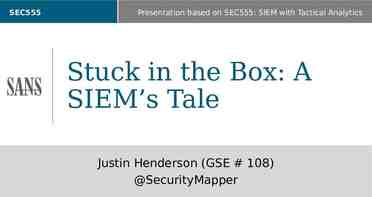Chapter 3 Framing the Problem
34 Slides206.50 KB

Chapter 3 Framing the Problem

Case Ben is assigned by his employer, Cartex, to work on an improvement to an ultrasonic range-finding device. While working on the improvment, he gets an idea for a modification of the equipment that might be applicable to military submarines. If he is successful, it could be worth alot of money to his company. However, Ben is a pacifist and does not want to contribute in any way to the development of military hardware.

Case So Ben neither develops the idea himself nor mentions it to anybody else in the company. Ben has signed an agreement that all inventions he produces on the job arethe property of the company, but does not believe the agreement applies his situation. For one thing, his idea is not developed. For another, his superiors know of his antimilitaritary sentiments. Yet he wonders if he is ethically right in concealing his idea from his employer.

How should we resolve controversial issues related to engineering ethics? Some kind of methodical approach is needed. 1977: Occupational Safety and Health Administration (OSHA) temporary regulation for limiting benzene amount in any working place (1ppm). 1980: U.S. Supreme Court relaxed the OSHA limitation (10 ppm, indicating that OSHA should come up with substantial evidence for more strict limits).

Case of Benzene Exposure in the Workplace Was this conflict between OSHA and the Supreme Court a result of disagreement over basic moral beliefs? Moral disagreement at this issue looks as if there is some controversy of establishing minimum acceptable health standards in a work-place. There should be no question on limiting the benzene content to have sufficient healthy conditions. Possibly there is also un-clarity about the priorities and trade-offs in relation to this issue. (There is no such thing as perfect, carcinogen-free, or zero-risk working conditions at any place.)

What is Common Morality? Set of moral beliefs which most reasonable people do share regardless of their background (religious or secular). Examples Accepting bribes is unethical. Concealing conflicts of interest for a responsible engineer is wrong. Some obvious areas of disagreement Abortion, euthanasia, death penalty (in general). Euthanasia for a certain patient (specific case). But there is a general consensus over moral beliefs. So why do moral disagreements occur?

How to formulate our moral beliefs? Common features of human life include Vulnerability Autonomy Interdependency Shared expectations and goals Common moral traits So moral beliefs should include general principles such as not harming others, not to cheat, keep promises, respect for others, not to interfere with the freedom of others, etc.

How to formulate our moral beliefs? (cont.) But of course, with specific exceptions: Telling a lie is bad, but might be acceptable for a certain situation. One should be able to provide proper justification or a good cause to do so. Many engineering codes reflect these values underlined by common morality.

Different Morality Perspectives Distinction should be made between Common morality Personal morality Professional morality There could be conflicting answers from different morality perspectives: Taking bribe is obviously against professional and common morality. It can be OK for a certain individual’s own moral values. Designing destructive weapons could be OK for professional morality but against personal and common morality.

Engineers (apart from other professionals) have further responsibility to the society in general because of their expertise and capability of design and production which can either harm or benefit people. Scope of responsibility for engineers is debatable: Should an engineer inform the authorities when he/she notices the wrong of other engineers? Changes in common morality can impose changes in professional morality and vice-versa.

Justification of basing professional ethics issues on common morality Attempting to make judgments based on common moral values shared by everyone. This would eliminate possible bias (some moral values are important only by people having faith in a certain religion or belief). The Belmont Report: Sample Case. Ethical Principles and Guidelines for the Protection of Human Subjects of Research created by the former United States Department of Health, Education and Welfare Universalizability and Reversibility (Chapter 4 in 3rd edition)

Two Key Concepts: Universalizability and Reversibility. Universalizability: Whatever is right (or wrong) in one situation is right (or wrong) in any relevantly similar situation. (it requires us to be consistent in our thinking) Reversibility: Treat others as you would have them treat you (Golden Rule). What would you think if the roles were reversed?

How to Analyze a Case (1) What are the relevant facts? (2) What are the relevant kinds of ethical considerations? The Case of Steven Severson (page 38 or 54) Facts that are relevant? Facts that are irrelevant? Is there a breach of honesty if he deliberately omits some data from his report? How do universalizability and reversibility apply in this case?

Factual Issues What looks like a moral disagreement can be disagreement over the facts of the situation (possibly lack of sufficient information). Example 1: Dialogue of Tom and Jim on OSHA regulation. Example 2: Disagreement of Judy and Jane related to affirmative action to avoid sexual or racial discrimination. Some factual issues never become clear: There is no feasible way to prove that affirmative action is the only way to overcome discrimination.

Factual Issues (cont.) When the facts are clear, the possible moral disagreements can be identified easily. Difficulties: Sorting relevant facts from irrelevant facts is not always easy. Known facts versus unknown facts: Unknown Relevant Facts can make a big difference.

Ethical Concepts and Conceptual Issues How to define and measure? Health Safety Conflicts of interest Bribery Extortion Confidentiality Loyalty Some cases blatantly and obviously are unethical. But there are also very obscure situations.

Conceptual Issues (cont.) As far as health is concerned, what should be the “acceptable risk levels”? How to differentiate between bribery and extortion? Listing major features of clear-cut cases can help deciding on less obvious cases as well: Example case 1. (OSHA vs. US Supreme Court) Example case 2. (Steven Severson)

Specific Moral Problems vs General Moral Problems One can say that consensus is relatively easier for General Moral Problems. But most problems concerning professional ethics faced by engineers are of specific type. Specific Moral Problems are relatively more difficult to resolve.

Conclusion: How to Resolve Problems Identify relevant known facts. Identify relevant moral concepts. Try resolving factual issues. How unknown facts could affect the problem? Resolve conceptual issues. Revisit the earlier steps to check for extra relevant facts, factual issues, conceptual issues and unknown relevant facts. Additional relevant moral values, concepts, etc. Suggest resolution with supporting reasons.

Framing the Problem Continued In the previous sections we considered some ways of sorting out Factual and Conceptual components of moral problems. Sometimes this resolves moral problems! But sometimes there is still uncertainty about what ought to be done or decided MORAL PROBLEM

Moral Problem means that there is disagreement or uncertainty about the moral evaluation of the person or action! Now we are going to focus more directly on these kinds of moral problems and consider some techniques for resolving them.

Two common Techniques: Line-drawing and Seeking a creative middle way. techniques.

Line Drawing Line Drawing involves viewing a moral problem on a spectrum. Where we have: Action on one end Action on the other Being clearly right end being clearly wrong (positive Paradigm) (negative paradigm) .

Line Drawing Sample Case page 60-63:(or 66-69 in 3rd edn.) “Suppose Amanda signs an agreement with Company A (with no time limit) that obligates her not to reveal its trade secrets. Amanda later moves to Company B, where she finds a use for some ideas that she conceived while at Company A. She never developed the ideas into an industrial process at company A, and Company B is not in competition with Company A; but she still wonders, whether using those ideas at Company B is a violation of the agreement she had with Company A. She has an uneasy feeling that she is in a gray area and wonders where to draw the line between the legitimate and illegitimate use of knowledge. How should she proceed?” What does the NSPE code say about disclosure of business and trade secrets?

NSPE III.4: Engineers shall not disclose confidential information concerning the business affairs or technical processes of any present or former client or employer without his consent.

Example page 63 (or 67): Negative Paradigm (clearly wrong) test case Positive Paradigm (clearly acceptable) Signed Agreement X Permission Granted A and B competitors X A and B not competitors Ideas jointly developed X Amanda’s Ideas only Ideas developed on job X Ideas dev. off job Used A’s lab Equipment X A’s equipment not used Others . (Is the situation in question more like the action is clearly right? or Is the situation in question more like the action is clearly wrong) *some negative and positive features may be more important than others (heavily weighted!!)

Complexities of the line drawing technique –general points need to be made (reading) Pages 62-64 (or 68-69)

Conflicting Values: Creative Middle Way Solutions There are situations when two or more moral rules or duties seem to apply and when they appear to imply different and incompatible moral judgments. This situation arises in engineering ethics. Sometimes when we take a closer look at these situations we may find that one value clearly has a higher priority than the other THEN WE HAVE AN EASY CHOICE. Example: p64 (common morality)

Creative Middle Way Solution Sample Case: (page 67-68 or 71-72 ) Brad is in the second year of his first full time job after graduating from Engineering Tech. He enjoys design, but he is becoming increasingly concerned that his work is not being adequately checked by more experienced engineers. He has been assigned to assist in the design of a number of projects that involve issues of public safety, such as schools and overhead walkways between buildings. He has already spoken to his supervisor, whose engineering competence he respects, and he has been told that more experienced engineers check his work. Later, he discovers that his work is often not adequately checked. Instead, his drawings are stamped and passed on to the contractor. Sometimes the smaller projects he designs are under construction within a few weeks after the designs are complete.

At this point Brad calls one of his former professors at Engineering Tech for advice. “I am really scared that I’m going to kill someone”, Brad says. “I try to over-design, but the projects I’m being assigned to are becoming increasingly difficult. What should I do?” Brad’s professor tells him that he cannot ethically continue on his present course, for he is engaging in engineering work that surpasses his qualifications and may endanger the public. What Should Brad Do?

What does NSPE canon 1 and 4 Say Engineers, in the fulfillment of their professional duties, shall: Canon 1: Hold, paramount the safety, health and welfare of the public in performance of their professional duties. Canon 4: Act in professional matters for each employer or client as faithful agents or trustees. (Brad’s obligation to his employer conflict with obligations to public)

Seeking a creative middle way involves: looking for a way to resolve conflicting values that comes as close as possible to satisfying all relevant obligations. Judgment and creativity are at a premium in this kind of activity. Note that: THERE ARE NO EASY FORMULAE FOR RESOLVING PROBLEMS USING THESE TECHNIQUES! (line drawing and middle way solutions)

Easy Choice: sometimes a value seems to be much more important than others we choose to honor the more important. In some cases we may be able to come up with a solution to the conflicting values that enables us to honor all of the relevant facts. Sometimes we must make hard choices between competing values. **Its useful to create a range of solutions to the conflict and first attempt to act in accordance with the solution that most satisfactorily honors the competing values. LIST BRAD’s OPTIONS (P.68 or 72) and decide on possible outcomes.

Procedure for dealing with conflicting ethical concerns Factual, conceptual, application, moral issues Conflicting Obligations Forward for further analysis Easy Choice Find Creative Middle Way Hard Choice Fig.3.3 Resolving Conflicts R E S O L U T I O N STOP Feedback to factual, conceptual, application, and moral issues as necessary

